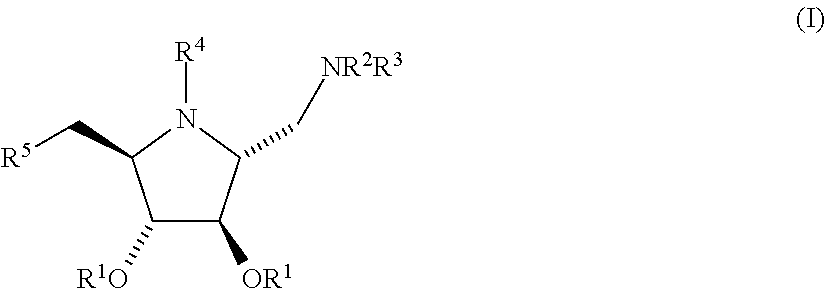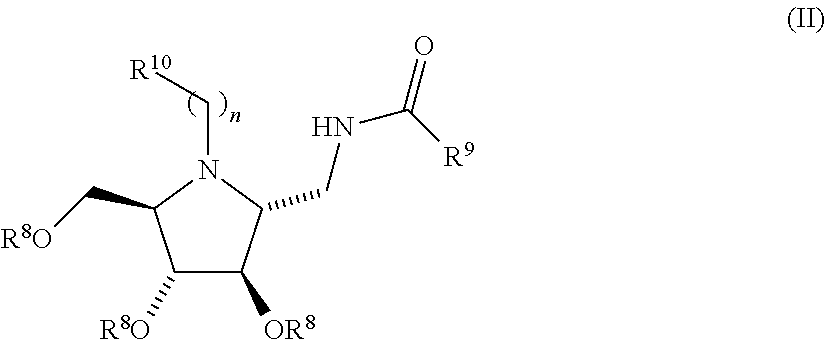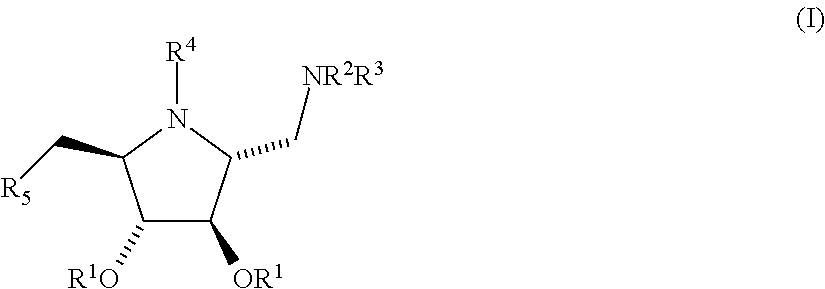Selective Glycosidase Inhibitors and Uses Thereof
a glycosidase inhibitor and selective technology, applied in the field of selective glycosidase inhibitors, can solve the problems of complex use of non-selective inhibitors in studying the physiological role of one particular enzyme, hyperphosphorylation of tau, and disruption of its normal functions, so as to increase the level of o-glcnac
- Summary
- Abstract
- Description
- Claims
- Application Information
AI Technical Summary
Benefits of technology
Problems solved by technology
Method used
Image
Examples
example 1
[0146]Compounds of the invention having general structure A are prepared via known synthetic methods.121,122 For example, following the synthetic route of Liu, Liang et al. (Scheme 1), reductive amination of the known intermediate 2123 with the appropriate aldehyde provides the desired N-substituted materials A.121,122
example 2
[0147]Compounds of the invention having general structures B and C are also prepared via known synthetic methods.121,122 For example, following the synthetic route of Liu, Liang et al. (Scheme 2), coupling of the known intermediate 1124 with the appropriate carboxylic acid or acid chloride provides the desired amides B.121,122 Reductive amination of B with the appropriate aldehyde provides the desired N-substituted materials C.121
example 3
[0148]Compounds of the invention having general structures D, E, and F are prepared according to the sequence described in Scheme 3. Thus, starting from intermediate 1124, reductive amination with the appropriate aldehyde provides structures C. Coupling of C with the appropriate carboxylic acid or acid chloride provides the desired amides D.121,122 A second reductive amination of D with the appropriate aldehyde furnishes structures F.121
PUM
| Property | Measurement | Unit |
|---|---|---|
| pH | aaaaa | aaaaa |
| concentration | aaaaa | aaaaa |
| concentration | aaaaa | aaaaa |
Abstract
Description
Claims
Application Information
 Login to View More
Login to View More - R&D
- Intellectual Property
- Life Sciences
- Materials
- Tech Scout
- Unparalleled Data Quality
- Higher Quality Content
- 60% Fewer Hallucinations
Browse by: Latest US Patents, China's latest patents, Technical Efficacy Thesaurus, Application Domain, Technology Topic, Popular Technical Reports.
© 2025 PatSnap. All rights reserved.Legal|Privacy policy|Modern Slavery Act Transparency Statement|Sitemap|About US| Contact US: help@patsnap.com



